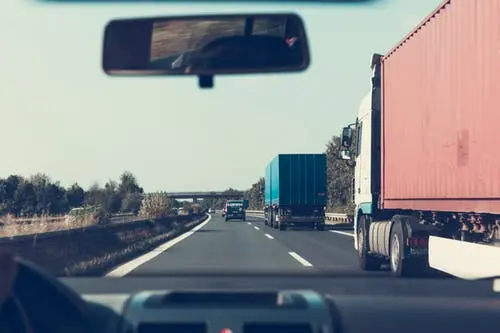A recent Ontario Superior Court ruling has provided some clarity on how the fault attribution rules ought to be applied to loss transfer disputes in the case of chain-reaction accidents, personal injury lawyer Steve Rastin says.
As Rastin explains, Kingsway General Insurance Co. v. Dominion of Canada General Insurance Co. 2017 O.J. No. 391, involved a commercial vehicle insured by Kingsway that struck another vehicle, which then struck an automobile insured by Dominion. All three vehicles were moving. The Dominion vehicle then struck a stationary vehicle. Dominion brought a claim against Kingsway for loss transfer indemnification for no-fault accident benefits it paid out to the driver of the Dominion vehicle, says Rastin.
"At the root of the dispute was whether, under the Fault Determination Rules (FDR), loss transfer was payable from one insurer to another, when the vehicles that each company insured did not actually collide. Under the provisions of Ontario's no-fault accident benefits system prescribed by the Insurance Act, Dominion was obligated to pay statutory accident benefits (SABs) to its insured, but it was also entitled, in certain circumstances, to claim indemnification from the insurer of a heavy commercial vehicle where that heavy vehicle was 'involved in the incident' from which the obligation to pay SABs arose," says Rastin.
Dominion commenced arbitration against Kingsway, alleging that those circumstances applied, while Kingsway took the position that loss transfer was not available to Dominion because its vehicle did not directly collide with the Dominion vehicle. Rastin explains that the arbitrator was asked to consider the applicability of s. 9(3) of the FDR, which sets out how fault ought to be apportioned when three vehicles in motion collide. The arbitrator found that since the final vehicle was stationary, s. 9(3) did not apply, and concluded that she was therefore directed by s. 5 of the FDR to determine fault based on ordinary rules of law. She found, on the evidence, that the Kingsway truck was 100 per cent liable for the crash and ordered a loss transfer on that basis, says Rastin.
"The arbitrator went on to conclude that even if s. 9(3) had applied, she would have found for Dominion. In order to make this determination, she considered the conflicting lines of case law that considered whether a vehicle could be found liable in the loss transfer context, even if it did not strike the vehicle making the claim - something referred to as 'leapfrogging,'" Rastin explains.
However, Kingsway appealed the findings to the Superior Court, and Justice Robert Charney overturned the arbitrator's decision. The judge, says Rastin, accepted Kingsway's argument that the Court of Appeal in State Farm Mutual Automobile Insurance Company v. Old Republic Insurance Co. of Canada 2015 ONCA 699 made it clear that s. 9 should be interpreted to permit loss transfer recovery only in cases where the vehicles came into direct contact with each other at the time of the accident.
"The court found that the interpretation proposed by the arbitrator could lead to the unintended and absurd result that the first party insurer could be entitled to be indemnified for 150 per cent of the SAB payments it had made, and that the rear vehicle in a chain-reaction collision could be found 100 per cent at fault for the entire series of collisions. A more reasonable interpretation, in the view of Justice Charney, was that the FDR should be used to apportion degrees of fault for each of the collisions between two automobiles in a chain reaction, and that analysis should not consider any related collisions," he explains.
According to Rastin, Charney found that only the first three vehicles in the crash ought to have been considered, and since they were all in motion, the arbitrator had erred in applying s. 9(3) and concluding that there was loss transfer recovery by the Dominion vehicle, as it had not been struck by the Kingsway truck. The judge also rejected the case law that permitted leapfrogging under s. 9, adds Rastin.
"Justice Charney's analysis appears consistent with the Court of Appeal's consideration of similar issues in State Farm and may provide some clarity to aspects of the law relating to loss transfers," he says.

